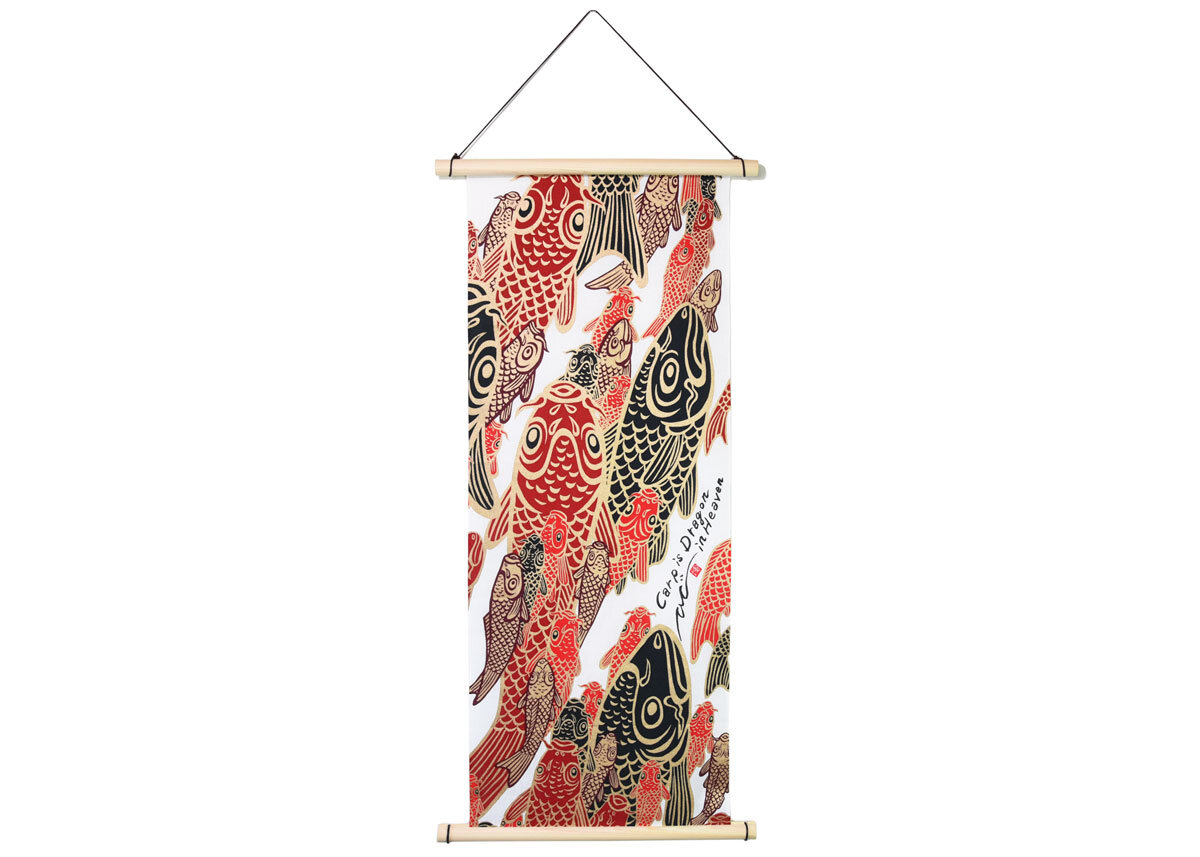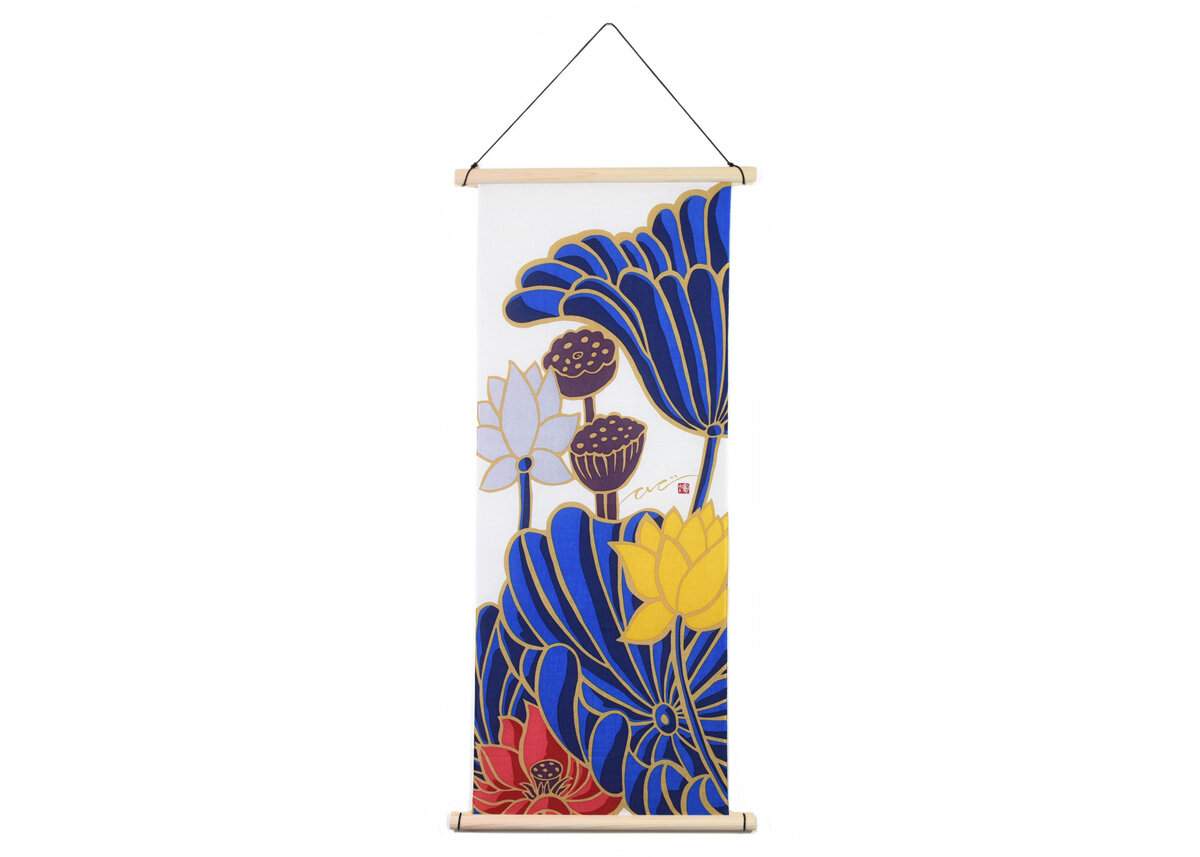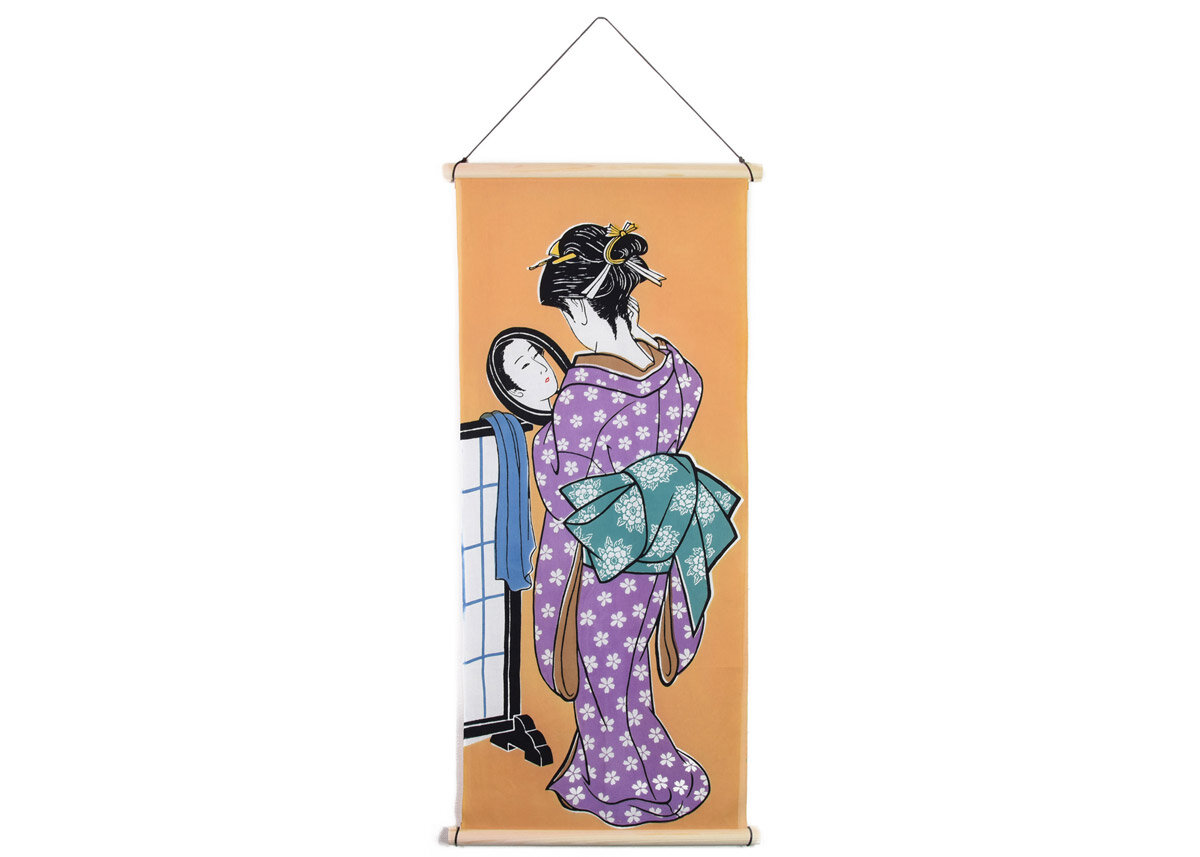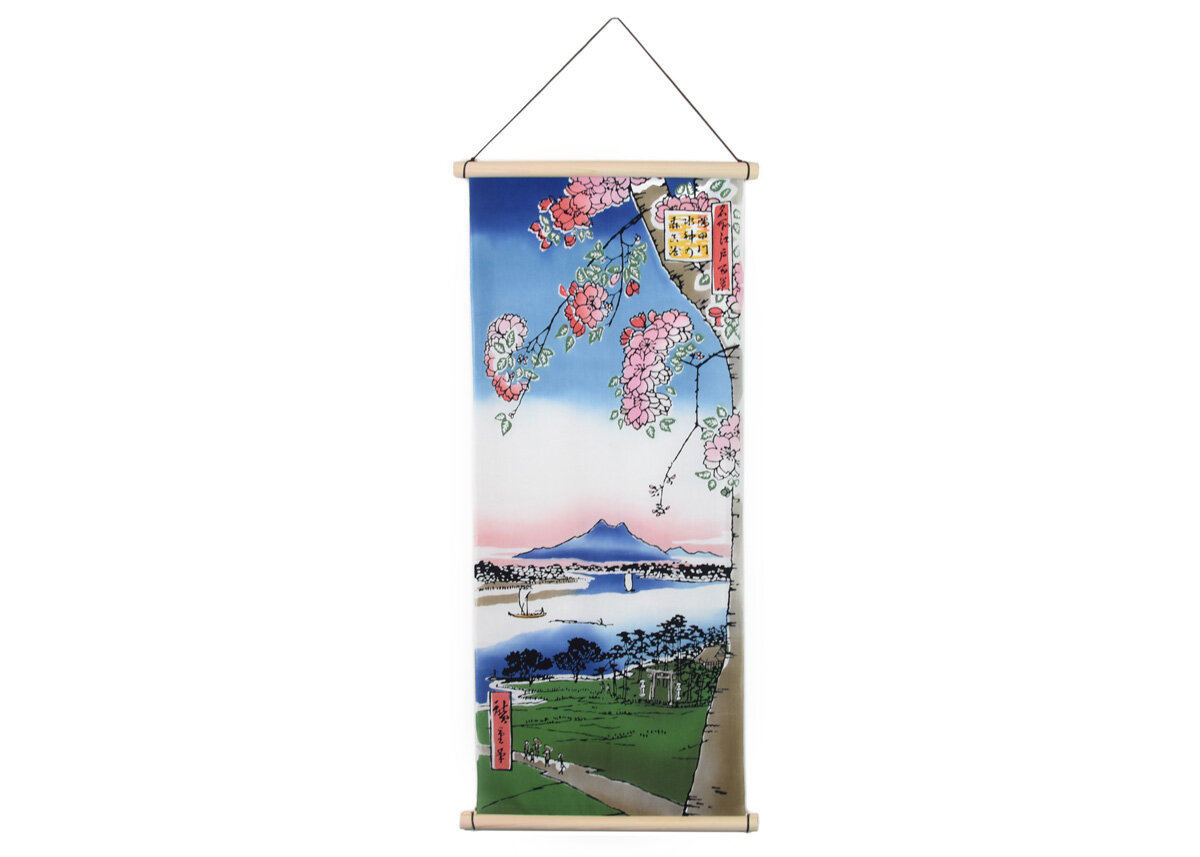Choosing a Japanese Tenugui Towel: All You Need to Know
by Lucy Dayman | CRAFT
Rienzome Tenugui, available at Japan Objects Store
Tenugui is one those endearing, everyday, handcrafted Japanese objects that once you know what it is, you simply can’t live without. A Japanese Tenugui is a handy piece of fabric, always in gorgeous Japanese patterns, with an almost infinite amount of uses. Although the name may seem unfamiliar to you, if you have even a vague interest in Japanese design, chances are you’ve seen one of these before. So what is a tenugui, how do you use it, where do you buy it, and what has it got to do with martial arts? Here is everything you need to know about this little Japanese wonder that packs a big punch!
What is a Tenugui?
An easier question would probably be ‘what can't a tenugui be?’ as it would doubtless yield fewer answers! In the most basic sense, a tenugi is a piece of cloth, usually cotton, that can be used in countless ways. With its soft frayed edges and delicate texture, a tenugui looks a little like a rag, and you know what, there’s no reason it couldn’t be used as such.
Women with Tenugui Head Covering, 1908, Museum of Fine Arts, Boston
The name tenugui 手拭い in fact comes from the words hand and wipe, so perhaps you could say it’s the Japanese cousin of the handkerchief. As a lightweight handtowel, it is certainly an indispensible accessory in these hot summer days! However given the craftsmanship and history that goes into creating tenugui, using it just to wipe up sweat and spills feels a little wasteful!
Typically around 3 feet long and 1 foot wide, its shape makes it an excellent fashion accessory, worn as a headwrap, or head band. It is also perfect for gift-wrapping, and as a gift in itself. Japanese Tenugui can be used as a canvas for some fine artistry, which means they can also be hung up for view, tapestry style. For example, the tenugui above features fantastically stylized lotus flowers by veteran contemporary visual artist Hideki Kimura. The original can be found on the sliding panels within Kyoto’s Shoren-in Temple.
Utagawa Hiroshige, Dye House at Konya-Cho, 1857, Met Museum
Historically it’s said that the tenugui was created during the Heian period, around a thousand years ago, which was a time of great cultural evolution in Japan. Tenugui cloths were originally considered luxury items, crafted from silk or fine cotton and hemp; however, as fabric production techniques evolved, tenugui became far more affordable, and their real everyday uses were explored, creating in the tenugui we see today.
What to Consider when Buying Tenugui?
Making Rienzome Tenugui, available at Japan Objects Store
If you’re in the market for tenugui there are three main factors to consider: its intended purpose, the quality of the cotton, and authenticity of the material. If you’re looking for a tenugui that’s going to be used for gift-wrapping, it’s better to go with something perhaps a little thicker. It will make your life easier if you pick a repeated pattern rather than a full image which will be distorted during the folding.
If you’re wanting to ensure that what you’re buying is of the best quality it’s safest to got for the authentic, and be sure to buy a made-in-Japan product. Made with the quality cotton, expert hand dying and always sold at an affordable price point, you really can’t go wrong.
Similar to the Tenugui is the Furoshiki. Find out more about these at Furoshiki: All You Need to Know About Japanese Wrapping Cloth.
Where Can I Buy Tenugui?
Horikiri Iris Tengui & Suido Bridge Tenugui, available at Japan Objects Store
You can easily pick up a tenugui from many of Japan’s craft and gift stores, as well as more traditional souvenir outlets. However if you’re on the hunt for something a little special or a little unique, be sure to pay a visit to Rienzome at Japan Objects Store. For more than 140 years, Rienzome has produced countless tenugui designs. You’ll find everything from whimsical and auspicious designs, to depictions of Japan through the four seasons, to masterpieces of ukiyo-e woodblock prints.
Rienzome’s tenugui consist of two types of cotton fabric, Niioka and Shinwakamatsu which differ in thread count. Niioka fabric has a higher thread count, making it finer and softer to the touch than Shinwakamatsu fabric. However, all Rienzome tenugui soften with continued use and both Niioka and Shinwakamatsu tenugui are the result of the traditional chusen dyeing method in which the same pattern appears on both sides of a fabric.
Simple patterns are stenciled by hand while intricate designs are the result of machine-cast stencils. Due to the nature of the dying process resulting in minor differences in the pattern and color, no two tenugui are ever alike. To preserve the color and to prevent color transfer onto garments or other fabrics, hand wash tenugui separately. The ends of tenugui are traditionally left unhemmed, but they will stop fraying after a few washes.
How to Gift-wrap with Tenugui
Furoshiki cloths are used to wrap gifts, which makes a very attractive and eco-friendly container. Different shaped objects require different shapes and sizes of cloth, so here is where tenugui come in handy! There are a few little insider tips for those wanting to gift-wrap using a tenugui. This video offers some very straightforward guidance on how to perfectly gift-wrap a box. Or check out our article on furoshiki, for all your larger gifts.
How to Tie a Tenugui Headband
© Zicarlo van Aalderen / Creative Commons, Tenugui Headband
One of the most common uses for tenugui we see today is as a type of Japanese headscarf of sorts. Worn by both men and women, the tenugui as a fashion accessory rose to prominence alongside the popularity of onsen bathing. Given that the fuzzy towels we see today were not yet created the tenugui made an excellent multi-purpose bathing accessory, perfect for tying hair back while bathing, and then drying the body once done. For kendo fighters wearing a tenugui became extremely useful way to keep hair away from the face before putting on their protective headgear (known as bogu).
The basic method is to hold the corners of the tenugui’s longest edge in front of your forehead, then draw it back over your head so that the front edge is above your eyes, while you remain holding the rear two corners behind you. Wrap the corners tightly around your forehead, then lift the veil over the top of your head and fold it in. This video is a great visual guide, even if you don’t speak Japanese. The best way is just to give it a go!
Japan has a wealth of options for craft-addicts and fabric hunters. Check out these 5 Places to Buy Fabrics in Tokyo, or learn more about Japanese Noren in our Indispensible Guide!
For your next easy, useful and unique gift for a friend or family member, consider a tenugui!


















LIFESTYLE | July 28, 2023